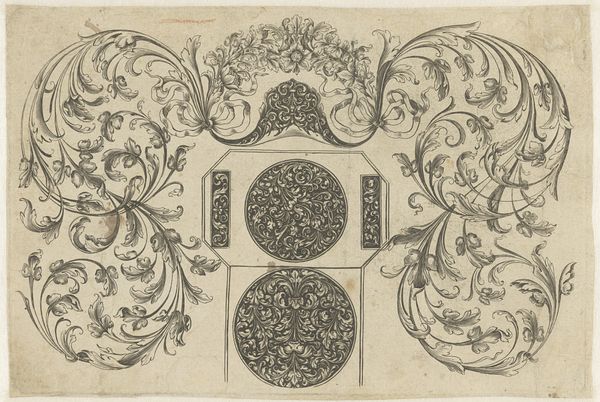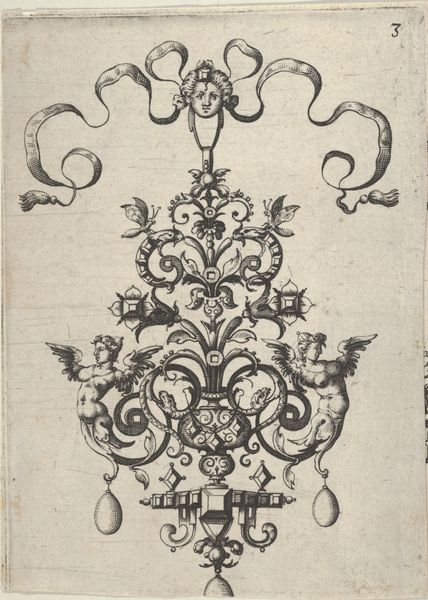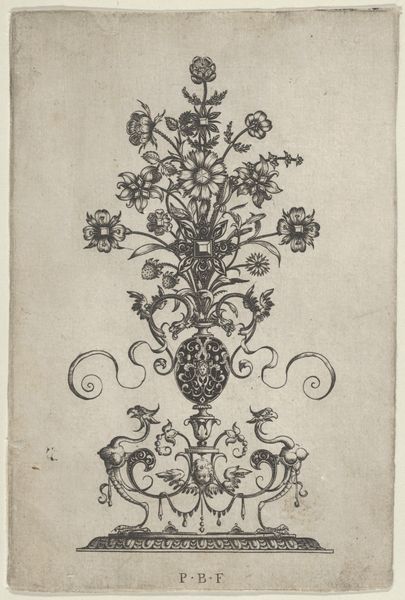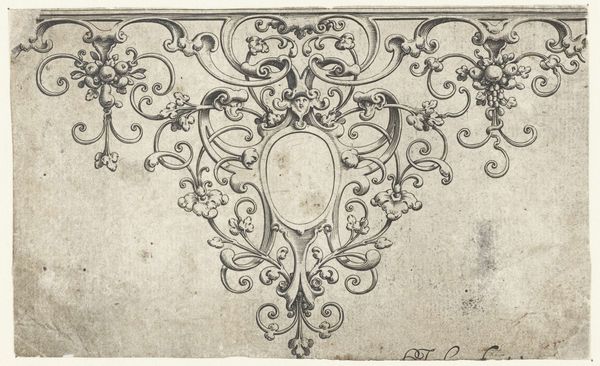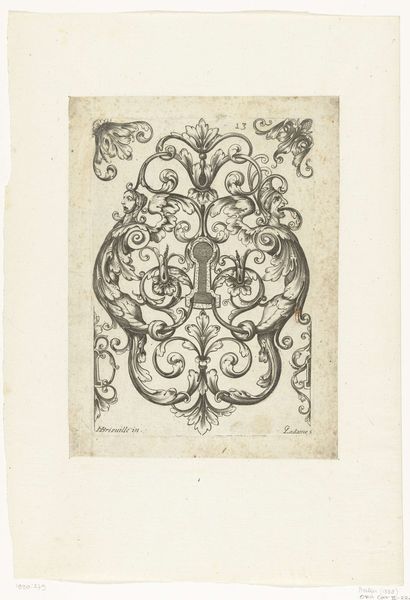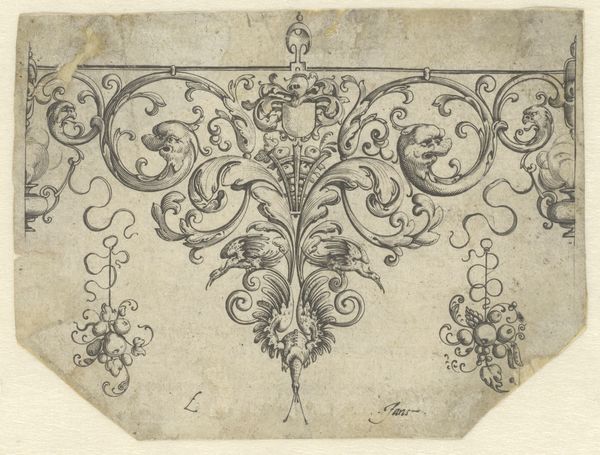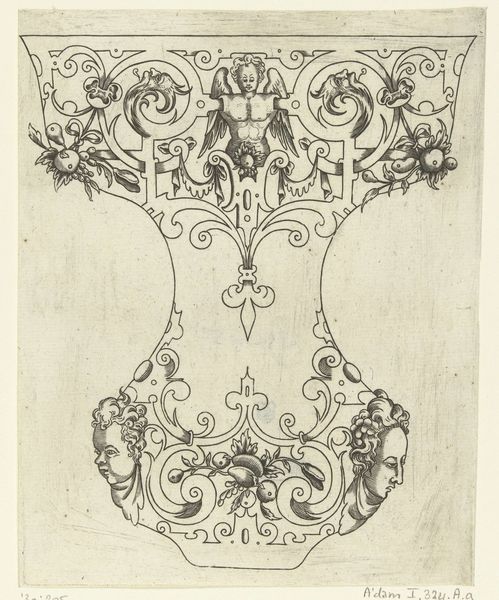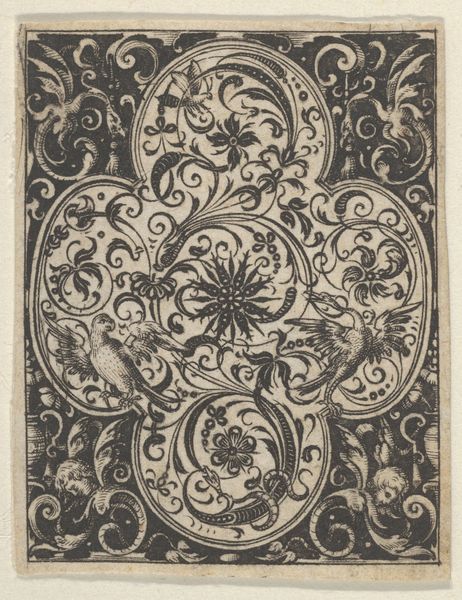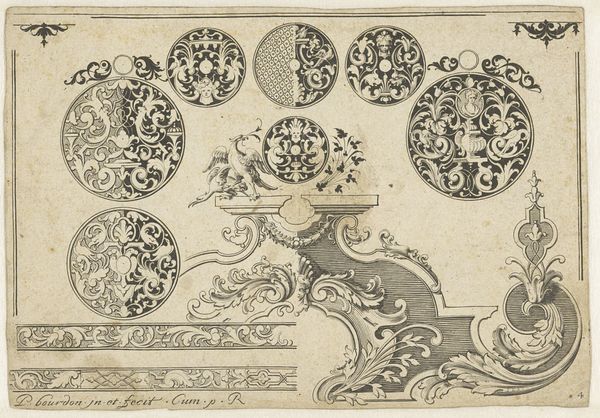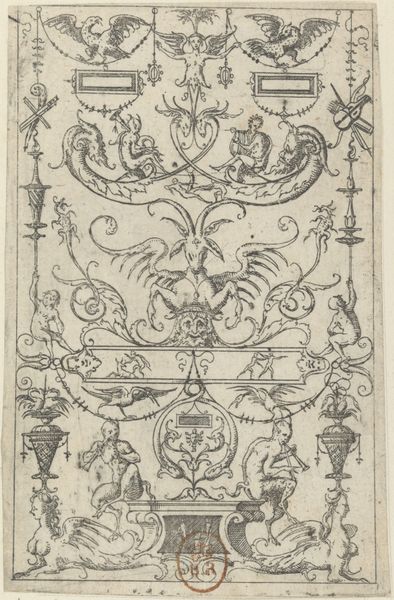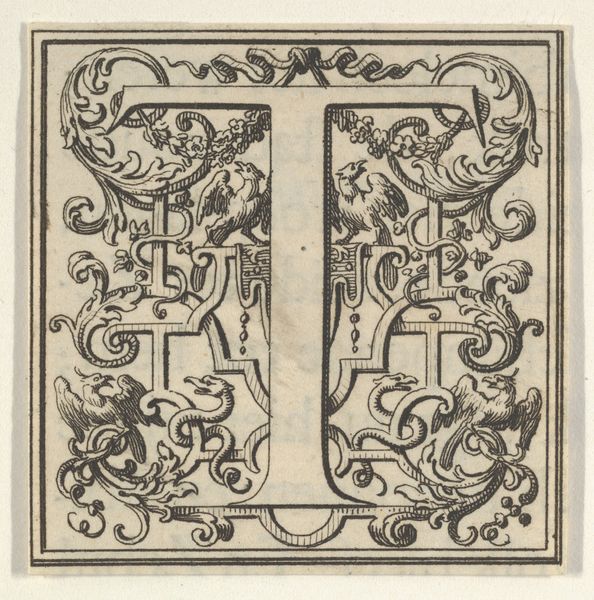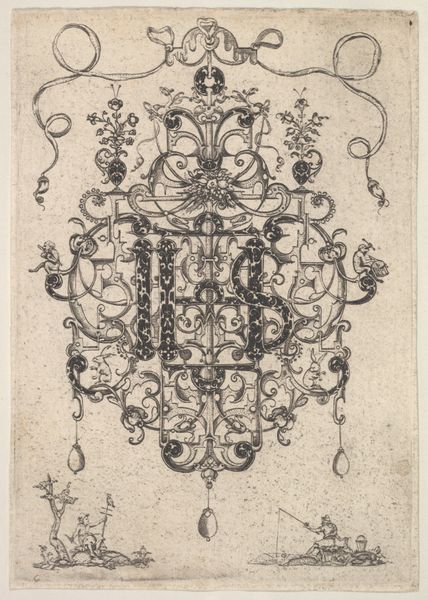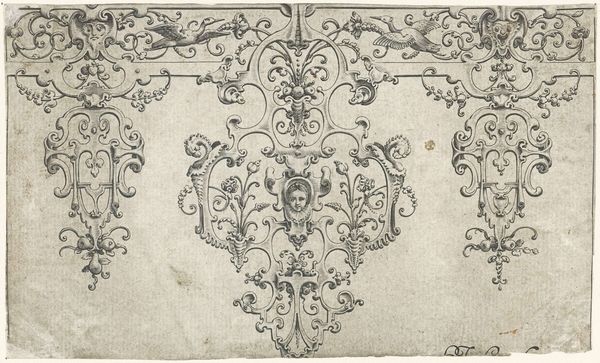
ornament, print, engraving
#
ornament
#
baroque
#
pen drawing
# print
#
pen illustration
#
pen sketch
#
old engraving style
#
form
#
personal sketchbook
#
pen-ink sketch
#
line
#
pen work
#
sketchbook drawing
#
decorative-art
#
sketchbook art
#
engraving
#
doodle art
Dimensions: height 72 mm, width 62 mm
Copyright: Rijks Museum: Open Domain
These five medallions were etched by Johann Wilhelm Heel in the 17th or 18th century. You can see the artist's skilled hand at work. He created each medallion using a technique called etching, which is a printmaking process that relies on acid to create lines in a metal plate. The artist would have covered a metal plate with a waxy, protective coating, then scratched away lines to reveal the metal beneath. When the plate was dipped in acid, the exposed metal would be eaten away, creating recessed lines. Once the coating was removed, ink would be applied to the plate, filling the etched lines. The plate was then pressed onto paper, transferring the ink and creating a print of the design. Consider how this printmaking process allowed for the relatively efficient mass production of decorative designs. The floral ornaments were reproduced and would become a part of the visual culture of the era. It’s a reminder that art and design have always been deeply intertwined with labor, production, and consumption.
Comments
No comments
Be the first to comment and join the conversation on the ultimate creative platform.
